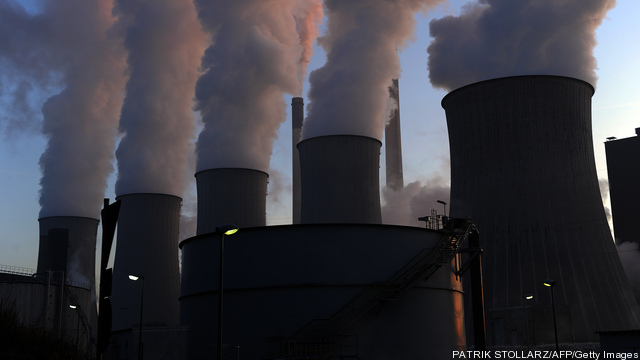
Coal generating plants that retrofit to meet new mercury pollution rules won’t have to meet the greenhouse gas limits just proposed for new coal plants, says the Environmental Protection Agency.
The EPA said it doesn’t have sufficient information to impose GHG limits on those plants. Normally, plants performing major retrofits are required to meet the same pollution standards as brand new plants.
The EPA rule proposed Tuesday sets a limit of 1,000 pounds of carbon dioxide per megawatt-hour, a level natural gas plants can meet but coal plants so far cannot. But many US coal plants need big retrofits in the next four years to meet EPA’s Mercury and Air Toxics Standards, issued in December.
“This exclusion is very consistent with senior EPA leadership’s statements that the agency would work with industry to make the MATS rule work and not threaten (electricity) reliability,” said Christine Tezak, senior energy and environment policy analyst with R. W. Baird & Co.
Scott Segal, executive director of the Electric Reliability Coordinating Council, a coalition of coal-burning utilities, noted EPA is still considering GHG limits for existing generating plants. “EPA says that it has no current plans to regulate existing power plants for GHGs. We have little confidence that the administration will adhere to this view, particularly after the election is over,” he said.
Environmental groups generally applauded EPA’s proposal but said they want to see limits on existing plants as well.
From Tough Regulatory Environment to Terrible Economic Climate
But other factors may force more coal plants into retirement far ahead of GHG rules. Steve Fine, a vice president with ICF International, noting the US natural gas price has just hit a 10-year low, said the gas price is “not only collapsing the margins for coal, it’s erasing them.”
With futures markets now pricing US gas below $5 per mmBtu out to 2023, said ICFI Principal Chris MacCracken, coal now has the lowest share of the electric generating market since 1995. In the past 15 years, coal has usual contributed about half of US generation.
Thirty coal plant owners, many but not all citing MATS, have announced about 38 gigawatts of coal retirements so far, he said. Those closures affect 257 individual units, or 20% of the US fleet, but those units comprise only 6% of total coal capacity, indicating the units closing are generally small, inefficient and uneconomic today.
MacCracken said there are about 115 GW of older coal that have no stack controls, and the decision whether to undertake costly retrofits to meet MATS is complex. Among the factors, he said, will be whether owners can get financing for retrofits, as well as technical issues about feasibility and technology. Moreover, he said, the competitive landscape will be shifting and may alter the economics again by mid-decade.
For more on coal plant retirements and EPA regulatory compliance issues on Breaking Energy, read here.
While possible EPA rules on coal ash disposal and water intakes continue to loom, MacCracken said EPA has eased back on some more potentially onerous provisions, and Fine said he is seeing “more and more” clients who do not believe there will be GHG regulation anytime soon.
ICFI Manager Shanyn Fitzgerald said analysts believe coal plant retirements could shut up to 85 GW, including the 38 GW already announced, during the next four years leading into MATS compliance.
